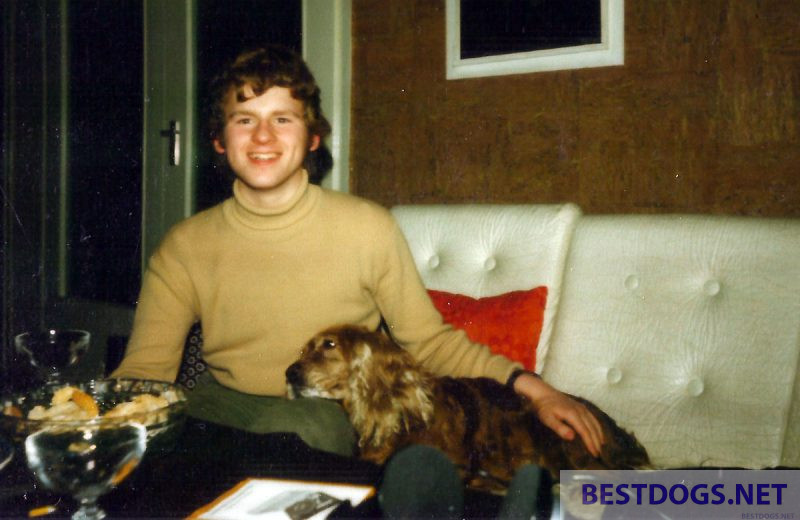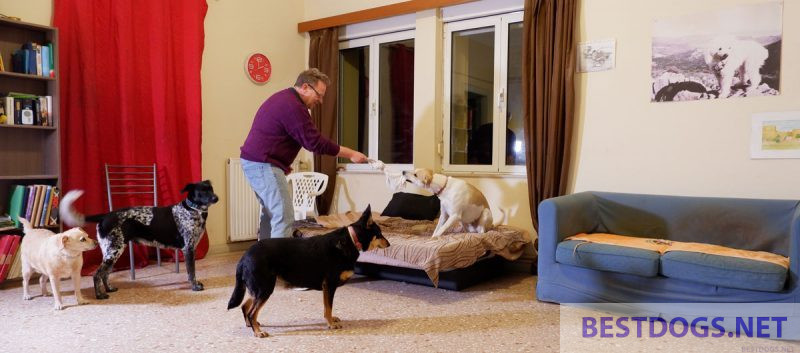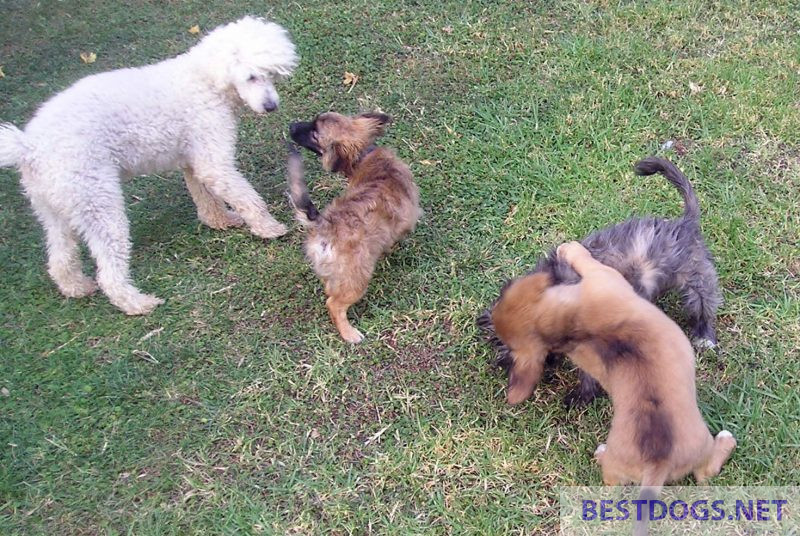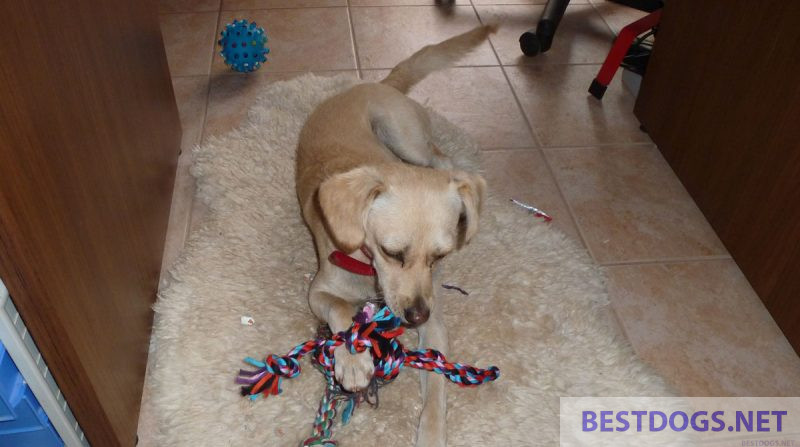The family dog.
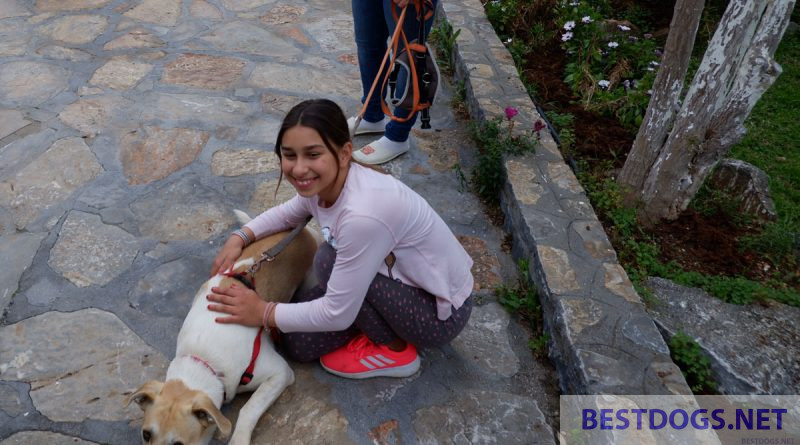
Good education of a dog and education of the child is essential so that children and dogs can get along well and also play.
Children like dogs live intuitively, often want to play, be in the fresh air and cuddle. Many dogs have children in their ‘surrogate pack’, the human family, and some of them come into the home as playmates for that very reason.
As a general rule, it is recommended that a dog not be added to the family until ‘family planning’ is complete and the youngest child is old enough for kindergarten. Otherwise, compromises are necessary.
In the coexistence between child and dog, however, there must be clear rules for all involved, otherwise even serious accidents can occur. If you take a closer look at such cases, it is mostly the person who has the right to educate and not the dog who is to blame.
Advantages of a family dog
Table of Contents

Playing with or walking a dog improves the overall fitness and health of all involved. This is especially important in this age of increasing childhood obesity, which is often exacerbated by addiction to television and computer games.
A study conducted in 2004 also found that children whose families owned a pet attended school eighteen half days longer during the year than children without animals. The researchers found that antibody levels were significantly more stable in children with pets, meaning they had stronger immune systems.
In other words, getting ‘dirty’ with pets is much better for natural resistance than living in a controlled, antiseptic environment.
For numerous children, moreover, their dog is their only true friend. A study conducted in Germany found that 80 percent of children surveyed felt their dog was an important friend and confidant, while 90 percent of parents felt the family dog played an important role in helping their young children learn social skills and improved the child’s quality of life.
In another survey of 338 children, 40 percent were found to seek out their dog when upset, and 85 percent viewed their dog as a playmate.
From the wealth of research on pet ownership and children, the following statements are of particular importance:
- Dogs are trusted keepers of secrets and private thoughts, as children often speak to their pets as they would their stuffed teddy.
- Animals teach lessons about life: Reproduction, birth, illness, accidents, death, and grief.
- They can help develop responsible behavior in the children who care for them.
- They build a bridge to nature and teach respect for other living things.
The matching dog
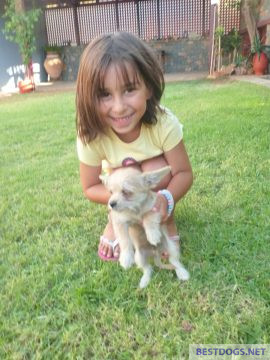
If a suitable dog or better puppy is to be added to the child, the family situation must be taken into account. A Mastion Napoletano, which is already as a puppy practically as large as the rascals in the kindergarten, or a Chihuahua, which will find little joy in being dragged around by clumsy children’s hands, is obviously less suitable.
The character of the dog is important and if a puppy is to be adopted, it is helpful to know the mother dog. After all, she carried the puppy for nine weeks and shaped its character during the subsequent eight to twelve weeks. If the nature of the mother dog is problematic, you should also distance yourself from the puppy, so as not to have problems later in living with the children.
A dog should also not be added to the family mainly because the child has wanted one for a long time. Just giving in to the children’s urge for a dog is not a good idea, because you should think about what happened to all the other things they begged for and acquired just to make them happy.
After all, a dog is a living and breathing creature that, although lovable, also requires a lot of work and commitment. Of course, many children then promise to take care of the dog, but the reality is often different.
Many children may also not be able to care for the dog on a permanent basis, as their situation is likely to change significantly within the animal’s lifespan. School and university, first relationships, etc. reduce the amount of time an older child has available.
The consequence is that the parents will be the main caregivers for the entire life of the dog, although their children can of course be very important ‘assistants’.
Taking in a rescue dog will affect every member of the family in some way. Everyone should be happy to live with the dog so that it can feel safe, secure and part of the family. In particular, the children will undoubtedly be very happy to welcome a new dog into their home. However, the question is whether the dog will also be happy to meet the children.
The way a child interacts with a rescue dog in particular is crucial for a successful introduction to a family. The most important characteristic is that the children’s interaction with the dog is safe. Therefore, both children and dog must be trained for this two-way relationship.
Many dogs end up in shelters because they have become unsociable with the children in their home. This can be very stressful for both the family and the dog.
If there is no sure sign that a dog is compatible with children, or the shelter feels that this is not a suitable candidate, do not take the risk. This will save everyone involved possible heartache, and it is better to look around for another dog.
Education of the family dog
Of course, the education of the dog should not be left to children. Even teenagers over the age of twelve, for example, should be entrusted with a German shepherd only under guidance.
Both children and dogs learn in two ways:
- By observing their own kind – social and observational learning.
- Through trial and error – empirical learning.
The consistent and species-appropriate education of the four-legged friend is important and a puppy should have its fixed place in the family from the beginning. Thus, the dog must know his rights, but equally his duties, and it must not happen under any circumstances that he begins with dominant behavior towards the children or even adults. The consequences can range from occasional growling to nasty bites.
In addition, the dog should be allowed to pursue a normal life, i.e. it should be left alone by the children when it sleeps in its place or even more so when it eats.
The children should know that dogs – and especially puppies – also use teeth when playing and that therefore, without bad intentions, minor scratches on the hand can sometimes occur.
The adult responsible for both dog and children, as the ‘pack leader’, must provide the necessary balance and understanding so that everyone is content and happy when playing and interacting together.
There is no universal instruction for this, because dogs as well as people and children are each differently ‘knit’ and it depends on the individual characters.
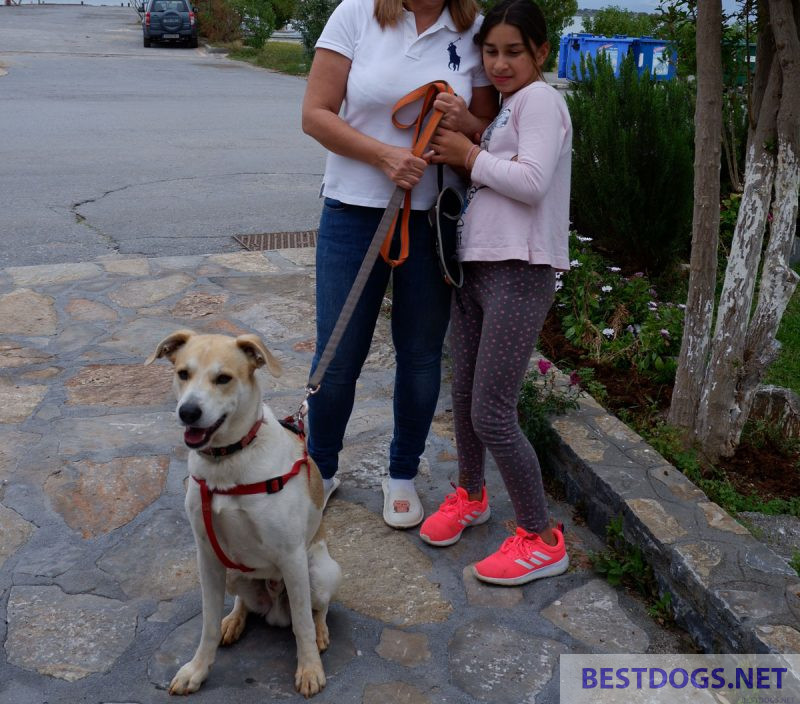
The burden of responsibility for the child to learn how to handle the dog is clearly on the shoulders of the adults. When brutal training methods and punishments are used to educate the dog, children are also taught that violence is an acceptable means to an end.
However, if the dog is shown care and understanding, given clear instructions and positive experiences and unconditional love, the child will also learn to respect not only animals but also humans.
The second way in which both the child and the dog learn what is acceptable in their ‘human-dog pack’
is to remember an outcome as a result of the actions.
For example, if the dog is praised profusely when he first sits on ‘sit’ and the same is done with the child when he is gentle with the dog, then both are likely to repeat the behavior because they remember that it results in praise.
Similarly, children learn that if they are gentle and kind to their dog, they will be rewarded by his company. By seeing the effect of their actions on the dog, they are likely to develop empathy and generalize this from their dog to people as well.
Research has shown that children with pets in the family are more socially competent and popular with their peers, feel better about themselves to do so, and are better able to understand the feelings of other children.
On the other hand, when a dog is hurt and feels pain – whether from an ignorant child or an empathy-less adult – it has only two reactions: He can try to exhibit appeasement behavior or run away.
However, if this repeatedly fails, common sense should conclude that he will then try something else. He may give a warning growl or show his teeth, he may bite to tell the person to back off, and if all else fails, he may use his teeth a little harder to make his point. This behavior is especially concerning with children when they may not know or notice the critical ‘early warning signs’.
Therefore, it is not acceptable for a human being, no matter how young, to disrespect an animal by hurting it or causing it pain. This is a basic lesson that should be taught to all children, regardless of age. If they fail to teach this lesson, then the child has missed an important part of their socialization. In addition, the responsible adult risks the dog hurting the child and this is a risk that should not be taken.
Therefore, it is important that a child learns not to do the following:
- Grab the dog’s eyes, mouth or ears.
- Pull on the tail or legs.
- Do not run around the dog when it is overexcited.
- Yelling or screaming around when the dog is near.
- Not disturbing the dog when it has retired to its resting area.
- Not touching the dog or its food/bowl when it is eating.
- Not making loud noise near the dog when it is sleeping, as sleeping dogs can be startled if suddenly awakened.
- Not hugging a still unfamiliar dog around the neck, as this could be taken as punishment or attack (called neck shaking).
- Petting or patting a still unfamiliar dog without asking him first. First, the fingers should be retracted and let the dog sniff the back of the hand.
- Do not stay near the dog if it freezes, stares at you, growls, lifts its flews, backs away or the hair on its back stands up. It is very important that all family members, but especially children, know these warning signs.
The most suitable for playing with children are good-natured, healthy and temperamental dogs of medium size. Golden and Labrador retrievers or cockers belong to these breeds. However, there are also good-natured, larger breeds for playing with children, which include German Shepherds, Airdaleterriers, Newfoundlands and Bernese Mountain Dogs.



